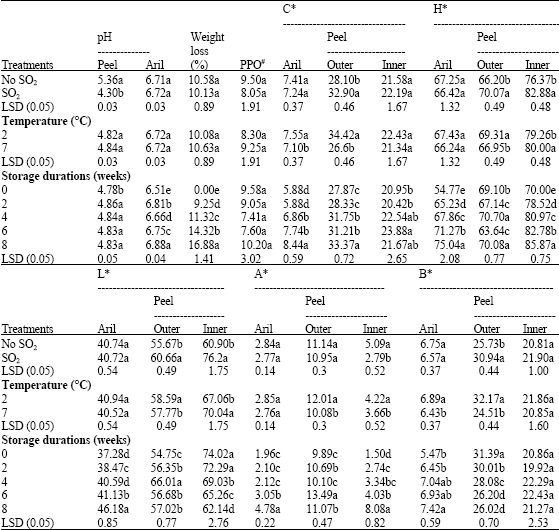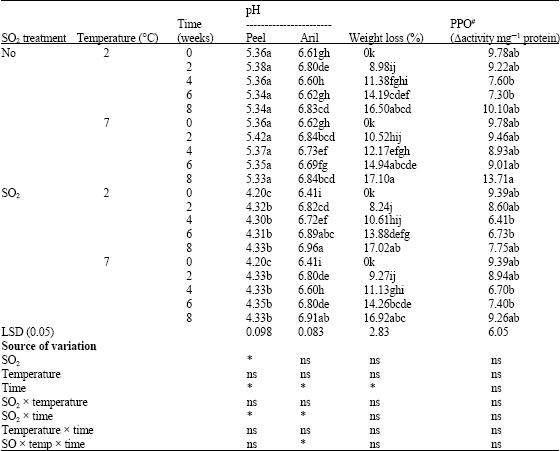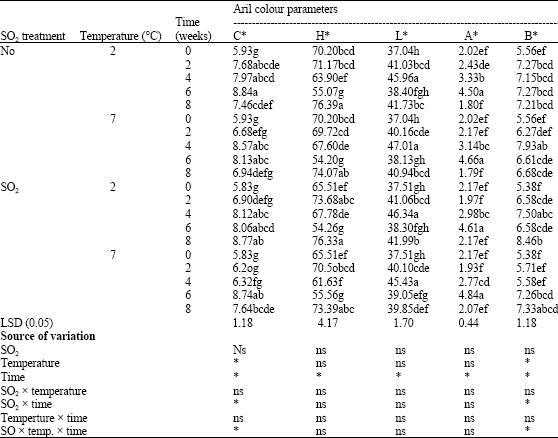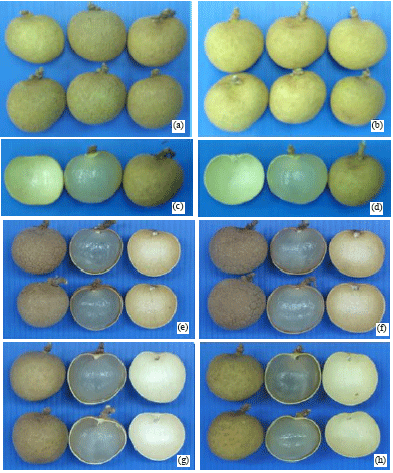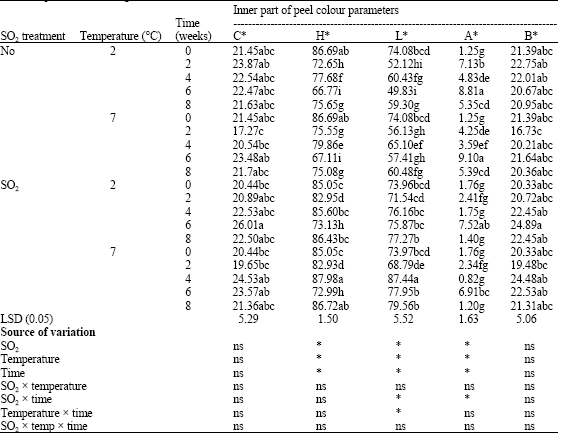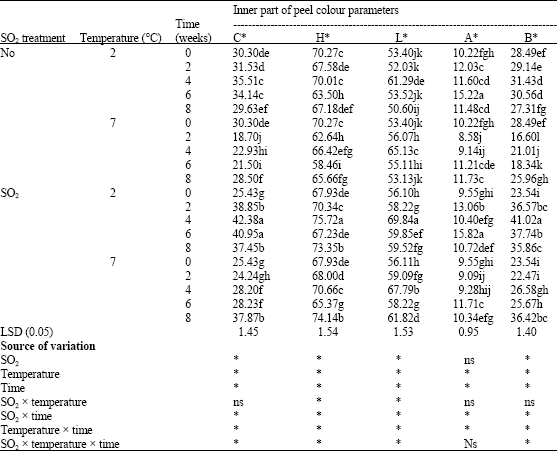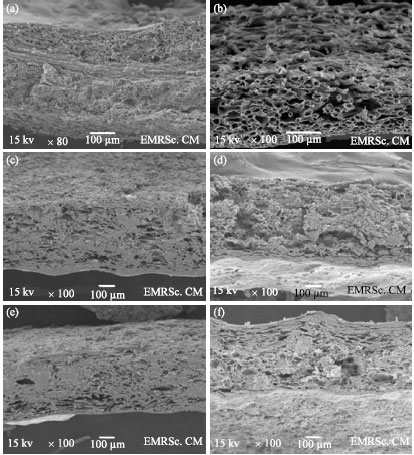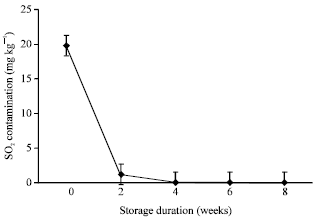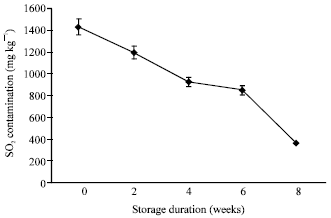Research Article
Minimally of Polyphenol Oxidase Activity and Controlling of Rotting and Browning of Longan Fruits cv. DAW by SO2 Treatment under Cold Storage Conditions
Postharvest Technology Research Institute, Chiang Mai University, Chiang Mai, Thailand
Vicha Sardsud
Postharvest Technology Research Institute, Chiang Mai University, Chiang Mai, Thailand
Kanda Whangchai
Department of Biology, Faculty of Science, Chiang Mai University, Chiang Mai, Thailand
Rumphan Koslanund
Postharvest Products and Processing Research and Development Office, Department Of Agriculture, Bangkok, Thailand
Pitipong Thobunluepop
Department of Agricultural Technology, Faculty of Technology, Maha Sarakham University, 44000, Thailand









